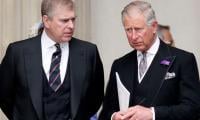ISLAMABAD: The federal government is considering a joint venture for the Pakistan International Airlines (PIA)-owned Roosevelt Hotel in Manhattan, New York, to secure long-term financial returns, Defence Minister Khawaja Asif informed the National Assembly on Monday.
“While selling the 19-storey property could provide short-term financial relief or help settle debts, a joint venture would allow the government to retain the asset while generating sustained value,” he stated during the question hour.
He noted that the hotel’s prime location, featuring two entrances and a central Manhattan address, makes it a unique and highly valuable piece of real estate. However, Khawaja Asif also confirmed that selling the hotel outright remains on the table as an alternative.
Earlier, the federal government presented a list of 26 state-owned enterprises (SOEs) in the National Assembly that would be privatised in three phases. The SOEs list includes Pakistan International Airlines (PIA), First Women Bank, and several power and financial institutions.
Responding to a question of Muhammad Bashir Khan, Parliamentary Secretary Aasia Ishaque Siddiqui informed the National Assembly that the Cabinet Committee on Privatisation (CCOP), in its meeting held on August 2, 2024, approved a phased plan for privatisation of 24 public sector organisations. “The process will be conducted in three phases over the next five years,” she added.
The parliamentary secretary said privatisation process for the PIA was likely to be completed by the end of this year. She said the phase-I would be completed within one year, while the phase-II in one to three years, and phase-III in three to five years.
The phase-I includes privatisation of the PIA, First Women Bank, House Building Finance Corporation (HBFC), Zarai Taraqiati Bank, Pakistan Engineering Company (PECO), Islamabad Electric Supply Company (IESCO), Gujranwala Electric Power Company (GEPCO), Faisalabad Electric Supply Company (FESCO), and Sindh Engineering Limited, she added.
In phase-II, the entities marked for privatisation include State Life Insurance Corporation, Pakistan Reinsurance Company, Central Power Generation Company, Jamshoro Power Company, Northern Power Generation Company, and Lakhra Power Generation Company. Additionally, Lahore Electric Supply Company (LESCO), Multan Electric Power Company (MEPCO), Hazara Electric Supply Company, Hyderabad Electric Supply Company, Peshawar Electric Supply Company, and Sukkur Electric Supply Company will also be privatised in this phase.
Similarly, phase-III will include privatisation of the Postal Life Insurance Company. It was stated in the written reply that in a presentation to the prime minister, held on March 7, 2024, the premier had ordered for chalking out a comprehensive five-year programme for privatisation of entities listed in the federal footprint State Owned Enterprises Consolidated Report FY2020-22 in consultation with the ministries/divisions concerned based on the following policy guidelines:
Loss-making commercial SOEs would be privatised on priority; footprint of the federal government would be restricted to commercial SOEs having some national or strategic interest and profitable commercial SOEs would also be identified to reduce federal footprint in economy.
In a written reply to another question of Dr Nafisa Shah, the Ministry of Planning and Development told the NA that in 2018-19, the poverty rate was 21.9 per cent. In the country, the cost of basic needs (CBN)-based poverty is computed using data from the Household Integrated Economic Survey (HIES). It has food poverty line and non-food poverty line components. Both components are summed to calculate the total poverty line.
The gender disaggregated data on poverty is not available. The HIES 2018-19 is a household level data (contains household information) covers 24,809 households and provides important information only with urban/rural disaggregation on household income, savings, liabilities, consumption expenditure, and consumption patterns both at the national and provincial levels. It was informed that the latest Household Income Expenditure Survey had been completed to facilitate better planning for poverty alleviation across the country.
While replying to another question, Minister for Parliamentary Affairs Tariq Fazal Chaudhry said the Pakistan Bureau of Statistics is currently compiling the survey data of poverty and the new estimates will be available by the end of this year, while its final report is likely to be published next year. He mentioned that the current relief measures for the people were based on data from 2018-2019.
In reply to another question, Tariq Fazal said the government had established a dedicated CPEC Secretariat under the Ministry of Planning, Development, and Special Initiatives, led by Minister Ahsan Iqbal. He said the initiative aimed to streamline project coordination across various federal and provincial departments. He said since the inception of secretariat, CPEC had played a crucial role in fostering economic growth and infrastructure development in Pakistan. However, he said, challenges in inter-departmental collaboration had posed hurdles to timely execution of projects. “The new framework, established in 2023, is a response to these challenges,” he said.
The finance ministry informed the NA that Pakistan Customs is currently holding 1,665 vehicles due to non-payment of customs duties. In a written reply to MNA Changaze Ahmad Khan, the ministry clarified that none of these vehicles have been allocated to individuals or are being used by influential persons, including constitutional functionaries, without legal authority.
Responding to another question from MNA Haji Jamal Shah Kakar, the finance ministry reported that a total of Rs84.249 billion was collected as income tax under Section 236 of the Income Tax Ordinance, 2001, by 11 telephone service providers between July 2024 and March 2025. The full amount was deposited into the national exchequer in accordance with Rule 43 of the Income Tax Rules, 2002, with no significant discrepancies between collected and deposited sums.
The ministry noted that while the tax collection process has remained stable, a major challenge lies in the absence of a structured mechanism for subscriber-level data sharing. To resolve this, the FBR, through PRAL, has implemented a data exchange programme with telecom companies using a secure File Transfer Protocol (FTP) system. The system facilitates regular sharing and reconciliation of tax data, with the FBR conducting weekly monitoring and initiating recovery proceedings under Section 161 for short withholding or delayed payments.
In a written response to MNA Tahira Aurangzeb, the Ministry of Economic Affairs informed the NA that Pakistan received a total of approximately US$7.386 billion in foreign assistance during the COVID-19 pandemic. This included US$170.65 million in grants, US$911.42 million in loans, and US$2.636 billion in budgetary support, of which US$4.067 billion was disbursed.
The grants came from various international partners, including the World Bank (US$19.86 million pledged, US$2.35 million disbursed), Asian Development Bank (US$7.78 million pledged, US$0.5 million disbursed), Islamic Development Bank, European Union, United States, Japan, China, United Kingdom, Canada, South Korea, and the United Nations. Notably, the EU pledged US$57.34 million and disbursed US$39.5 million, while the US granted US$41.9 million with US$20.87 million disbursed.
The ministry clarified that the assistance was aimed at strengthening Pakistan’s health infrastructure, supporting economic stability, and addressing the socio-economic impacts of the pandemic.
In a written reply to MNA Sharmila Faruqui, the commerce ministry informed the NA that the US’s three-month deferral of tariffs on Pakistani exports offers temporary relief to key export-oriented sectors, particularly textiles. However, once the tariffs are enforced, they could significantly impact Pakistan’s export competitiveness, with projected losses ranging between US$400 million and US$1.4 billion in export volume and value.
To mitigate the anticipated negative effects, the government has adopted a three-pronged strategy:
1. Reducing the US trade deficit by increasing imports from the US;
2. Lowering tariffs on mutually agreed items to boost access to US goods; and
3. Addressing non-tariff barriers (NTBs) through regulatory and procedural reforms.
These measures were formulated by a high-level Working Group and Steering Committee comprising public and private sector representatives.
In parallel, Pakistan is actively pursuing export diversification. Efforts include expanding exports to the European Union under the GSP+ scheme and targeting African markets through the “Look Africa Policy”, focusing on non-traditional exports such as pharmaceuticals, surgical instruments, tractors, three-wheelers, and sports goods.
The ministry also highlighted ongoing initiatives to enhance market access in Central Asia and the GCC through bilateral trade agreements, as well as improving export competitiveness by rationalising tariffs on raw materials and strengthening trade ties with countries like Azerbaijan, Turkiye, Malaysia, Indonesia, Tajikistan, and Uzbekistan.
In response to a question by MNA Mirza Ikhtiar Baig, Commerce Minister Jan Kamal Khan informed the NA that Pakistan’s bilateral trade with the US reached US$5.53 billion during July–March of FY 2024–25. This included exports worth US$4.34 billion and imports of US$1.19 billion, resulting in a trade surplus of US$3.15 billion in Pakistan’s favour.
The minister explained that the US calculates tariffs based on its trade deficit with a country: the deficit is divided by total goods imported from that country and then halved. Hence, it is incorrect to assume that a 5pc reduction in Pakistan’s tariffs on US goods would automatically result in a 5pc reciprocal reduction by the US.
To secure a reduction in newly imposed US tariffs, Pakistan would need to increase imports from the US. According to the ministry’s estimates, raising imports by US$0.5 billion could reduce US tariffs from 30pc to 26pc, while an additional US$1 billion increase could bring the rate down further to 21pc.















